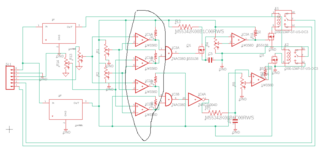Arbit1
Newbie level 5
Hi
I was using LM358 as voltage comparator in non inverting configuration
I gave 5V to vcc and 2.5V to inverting pin through a potentiometer
The issue is I am getting a output voltage of approx 3.8V even when the supply to the non inverting terminal is zero
I get output no matter I set the voltage of the non inverting pin zero or less than or more than that of inverting terminal
Also the ic gives the same output when non inverting is given some voltage and inverting is zero
The ic output gets zero only when both inverting and non inverting terminals are zero
Please help me to sort this
I desire to get high output only when the voltage at non inverting is greater than that at inverting i.e 2.5V

I was using LM358 as voltage comparator in non inverting configuration
I gave 5V to vcc and 2.5V to inverting pin through a potentiometer
The issue is I am getting a output voltage of approx 3.8V even when the supply to the non inverting terminal is zero
I get output no matter I set the voltage of the non inverting pin zero or less than or more than that of inverting terminal
Also the ic gives the same output when non inverting is given some voltage and inverting is zero
The ic output gets zero only when both inverting and non inverting terminals are zero
Please help me to sort this
I desire to get high output only when the voltage at non inverting is greater than that at inverting i.e 2.5V
